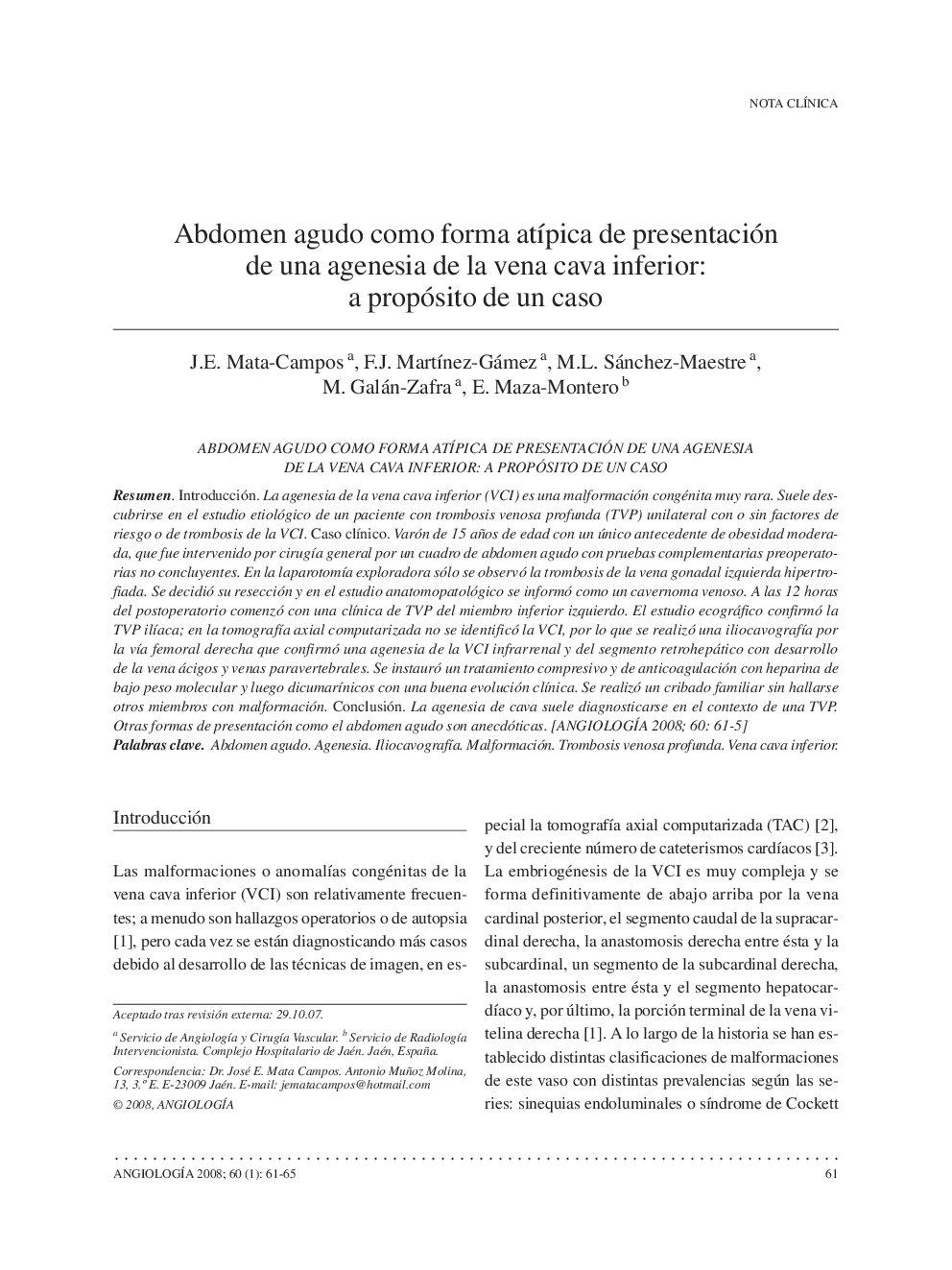| Article ID | Journal | Published Year | Pages | File Type |
|---|---|---|---|---|
| 2868054 | Angiología | 2008 | 5 Pages |
Abstract
Summary. Introduction. Agenesis of the inferior vena cava (IVC) is a very rare congenital malformation. It is usually discovered during the aetiological study of patients with unilateral deep vein thrombosis (DVT) with or without risk factors or thrombosis in the IVC. Case report. A 15-year-old male, with moderate obesity as the only relevant event in his medical history, who underwent general surgery to treat symptoms of acute abdomen with non-conclusive findings in the preoperative complementary tests. The exploratory laparotomy only revealed thrombosis in the hypertrophied left gonadal vein. The decision was made to excise it and the findings of the pathological study showed it to be a vein cavernoma. Twelve hours into the post-operative period, the patient began to display clinical symptoms of DVT in the left lower limb. Ultrasound imaging confirmed the iliac DVT; the IVC was not identified in the computerised axial tomography scan, and so iliocavography was performed via the right femoral to confirm agenesis of the infrarenal IVC and the retrohepatic segment with the development of the azygos vein and the paravertebral veins. Compressive therapy was established together with low-molecular-weight heparin anticoagulation treatment and then dicumarols; the clinical course of the patient progressed favourably. Familial screening was carried out but no other relatives with malformations were found. Conclusions. Cava agenesis is usually diagnosed within the context of DVT. Other presenting symptoms, such as acute abdomen, are anecdotal. [ANGIOLOGIA 2008; 60: 61-5]
Keywords
Related Topics
Health Sciences
Medicine and Dentistry
Cardiology and Cardiovascular Medicine
Authors
J.E. Mata-Campos, F.J. MartÃnez-Gámez, M.L. Sánchez-Maestre, M. Galán-Zafra, E. Maza-Montero,
